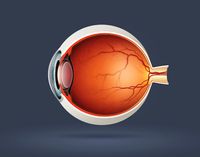Cataract Surgery Improves Driving In Aging Patients
A new study from the University of Western Australia has revealed that undergoing cataract surgery on both eyes resulted in a 48% improvement in safety during a driving simulator with patients.

While often essential for preserving vision in aging patients, new research has found that cataract surgery could pay major dividends in terms of improving a patient’s safety while operating a vehicle
A study presented at the American Academy of Ophthalmology (AAO) 2019 Annual Meeting in San Francisco found cataract surgery, when performed on both eyes, allowed patients to be nearly 50% safer when driving.
In an effort to assess the impact of cataract surgeries on driving performance and safety in patients, a team of investigators led by Jonathon Ng, MD, clinical senior lecturer at the University of Western Australia, carried out a study of 44 patients with a mean age of 73 years scheduled to undergo cataract surgery in both eyes. To determine how surgery impacts driving performance, investigators had patients take part in a driving simulator before the first surgery, between surgeries 1 and 2, and after the second cataract surgery.
The driving simulator used evaluated performance across a multitude of variables including adjusted speed limits, traffic densities, uncontrolled intersections, and pedestrian crossings. Investigators noted the simulator also included turning, roundabouts, and on-road hazards.
The simulator measured patients based on speed compliance, speed variation, lane excursions, and number of crashes or near misses over the 10 kilometer simulation. Poisson and linear regression models were used by investigators to assess outcomes of interest with adjustment for confounders.
Upon analyses, Ng and his team found near misses and decreased by 35% after surgery on the first eye(IRR 0.65; 95% CI, 0.46-0.87) and decreased by 48% after cataract surgery on the second eye(IRR 0.52; 95% CI, 0.35-0.78). Positive changes in contrast sensitivity were associated with decreases in near misses and crashes(IRR 0.69; 95% CI, 0.46-0.87).
Investigators noted there was also an association between contrast sensitivity improvement and a decrease in time spent speeding. There was no apparent association between cataract surgery with significant change in lane deviations or speed variation.
Based on results of the analyses, Ng and colleagues concluded driving performance and safety improved after both the first and second eye cataract surgery and this could be partly due to better contrast sensitivity post-surgery.
“These results highlight the importance of timely cataract surgery in maintaining safety and continued mobility and independence in older adult drivers,” Ng said.
This study, “Does Cataract Surgery Improve Driving Performance and Safety?,” was presented at AAO 2019.